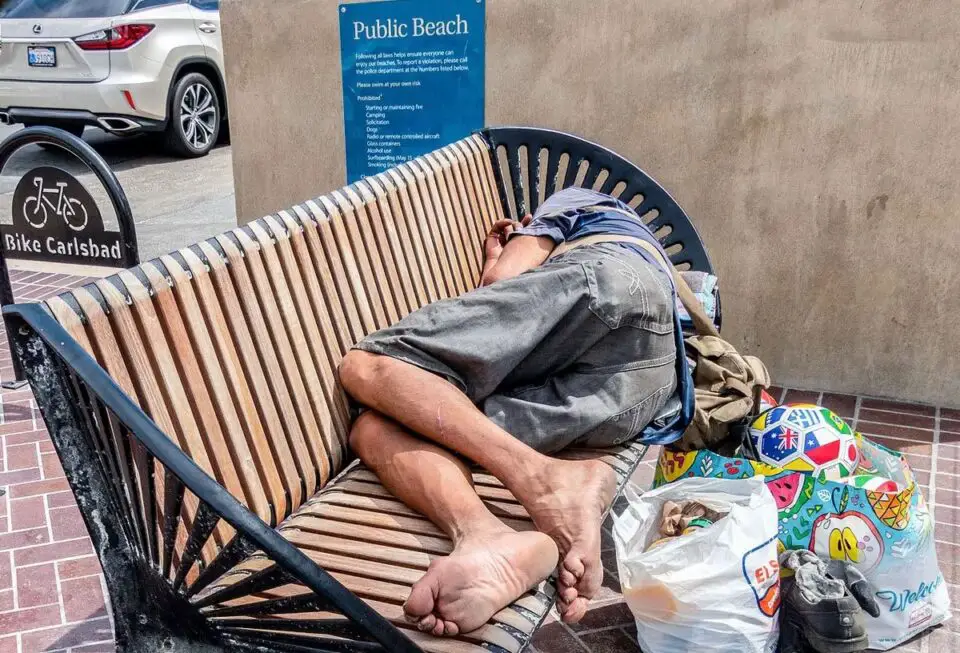REGION — Homelessness in the region increased by at least 14% this year, according to the results from the 2023 WeAllCount Point-in-Time Count released June 8.
The Regional Task Force on Homelessness conducted the federally-required count in January throughout the county with the help of more than 1,600 volunteers. The count is a one-night snapshot of the minimum number of San Diegans experiencing homelessness.
Overall, the count found no less than 10,264 individuals experiencing homelessness across our region. This number includes 5,171 unsheltered San Diegans, with 5,093 individuals in shelters and transitional housing.
“These results show what’s been clear from our monthly reporting and from what we see on the streets — the region’s homeless system and providers simply cannot keep pace with the ever-increasing flow of people across the county falling into homelessness for a variety of reasons,” RTFH CEO Tamera Kohler said. “While there are some bright spots, more clearly needs to be done if we want to see different results.”
A statement from the task force reminds readers of the report that the challenge of finding every unsheltered person in a car, encampment or under a bridge is impossible.
However, under an agreement with the California Department of Transportation, volunteers reached people experiencing homelessness in encampments on Caltrans property for the first time. The ability to conduct a robust count on these sites for the first time led to an additional 661 people being counted this year.
With these new areas added to the Point-in-Time Count, the region saw a total increase of 22% in the number of people experiencing homelessness this year compared to 2022.
Without those additional CalTrans sites added to the count, the region saw a 14% increase compared to the same areas covered last year. Of those surveyed, 80% said they began experiencing homelessness in San Diego County.
“What you’re seeing is a system that is stressed and overloaded,” RTFH Board Chair Ray Ellis said. “Our monthly data reporting shows that from March 2022 through February 2023, more than 11,000 people experiencing homelessness exited the system and moved into a home or apartment, an amazing achievement.
“However, we’re still seeing a worrying jump in people experiencing homelessness over that same time period. This should be a clarion call to invest in what we know works. We need a lot more housing, a lot more shelter beds, and additional funding for outreach and services.”
RTFH’s monthly reports found that for every 10 San Diegans housed, 13 San Diegans experience homelessness for the first time. Those reports also show the region has not seen a month since March 2022 where more San Diegans have been housed compared to those experiencing homelessness the first time.
“We are disheartened to learn that the homeless population continues to grow in San Diego at an alarming rate, and that so many families and individuals are living on the streets,” said Deacon Jim Vargas, president and CEO of Father Joe’s Villages, one of the region’s largest homelessness services providers. “This reality underscores the urgent need for action. These numbers serve as a stark reminder that we must implement more strategic solutions to eradicate homelessness from our community.”
“Even with an increase in services at Father Joe’s Villages — serving 3,000 each night, expanding shelter beds during the height of the pandemic, providing medical care to more people in our health center, and opening new affordable housing communities — there are systemic challenges we must address as a community before we can put an end to homelessness for good,” he said.
The region’s homeless response system interacted with more than 41,000 people in San Diego County from October 2021 to September 2022, compared to 38,000 the previous year.
“Until we have enough shelter beds, many will remain living on the streets,” Vargas said. “Until we have enough affordable housing, the ultimate solution to homelessness, the number of unhoused will remain an issue. Together, we must rise to the occasion and rally behind those in need, working tirelessly to provide solutions and support that result in a healthy community.”
Among the sobering data, RTFH leadership found some glimmers of hope. Families experiencing unsheltered homelessness decreased by 25% in the past year. Additionally, there was a larger increase in the sheltered population of transitional-aged youth than the unsheltered population.
“Also important is that the percentages of people experiencing sheltered and unsheltered homelessness remain roughly the same as in 2022, meaning that added shelter capacity — especially in the city of San Diego — is helping to provide more people with a safe place,” a statement from the RTFH reads.
Additional data points include that 29% of people living on the streets are women, and people 55 or older now make up 29% of the region’s unsheltered population, with 46% experiencing homelessness for the first time.
“Similar to last year, the shocking growth in homelessness among San Diego County residents over age 55 is a significant component of the region’s homeless population,” said nonprofit Serving Seniors chief operating officer Melinda Forstey. “While this is not unexpected, it is daunting and disappointing.
“The causes of older adult homelessness are in many ways different from the general unhoused population. The solutions required must address these differences,” she said.
Serving Seniors recommends a “shallow rental subsidy” approach to prevent homelessness caused by economic situations and age-friendly shelters or dedicated areas for older adults within congregate shelters and safe camping areas.
The San Diego City Council is set to consider an “Unsafe Camping Ordinance” on Wednesday, which would prohibit tent encampments in all public spaces throughout the city if shelter beds are available and would ban tent encampments at all times in certain sensitive areas — parks, canyons and near schools, transit stations and homeless shelters — regardless of shelter capacity.



